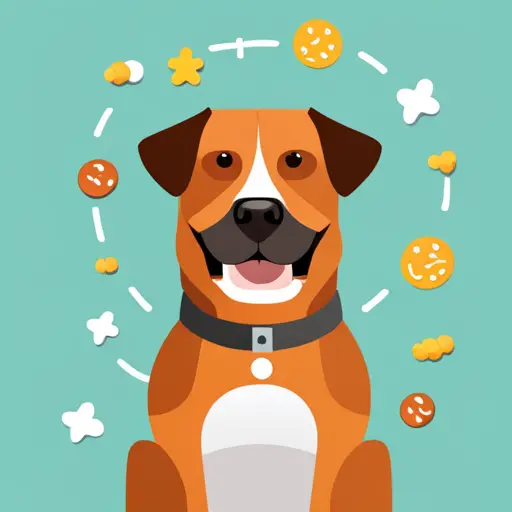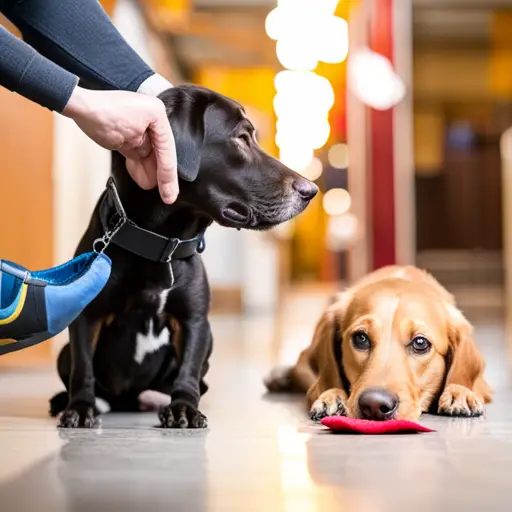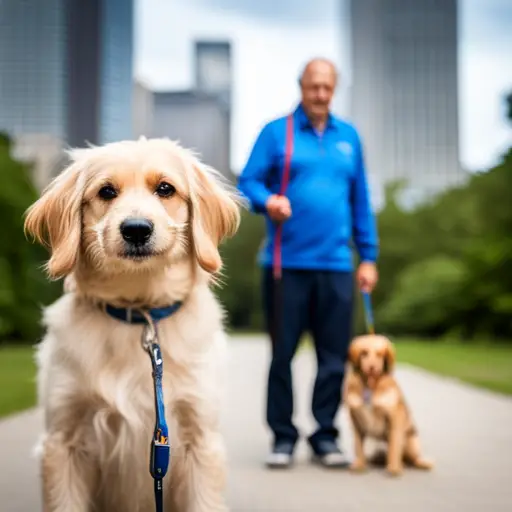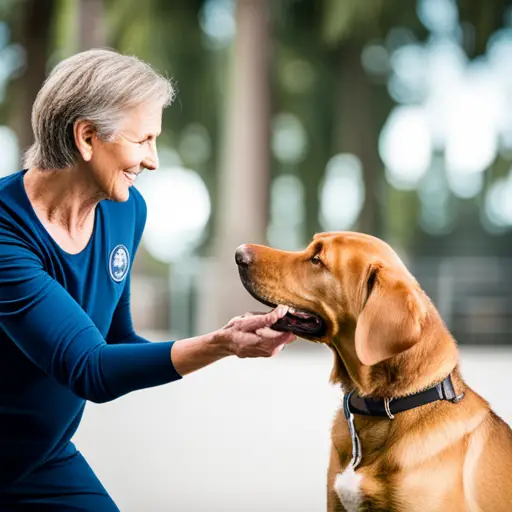Are you struggling to train your furry best friend? Are you frustrated with their behavior and unsure of what to do next?
The key to successful dog training lies in consistency. Consistency is one of the most important aspects of training your dog, and it can make all the difference in helping your pup learn and understand the rules and expectations you have set for them.
Regarding dog training, consistency means creating a clear and predictable routine for your dog. This includes establishing rules and expectations, reinforcing positive behaviors, and discouraging negative behaviors.
By staying committed to a consistent training routine, you can help your dog understand what is expected of them and reinforce good behavior over time. So, whether you’re just starting out with training or are looking to improve your current routine, understanding the importance of consistency is crucial for success.
Key Takeaways
- Consistency is crucial for successful dog training.
- Establishing clear rules and expectations helps build trust and understanding between you and your dog.
- Reinforcing positive behaviors through consistent reward systems is important.
- Punishment-based training methods can have negative consequences for your dog’s mental health.
Establish Clear Rules and Expectations

You’ll find that establishing clear rules and expectations will make training your furry friend a breeze! Dogs crave structure and routine, so it’s important to set boundaries and let them know what’s expected of them. This helps build trust between you and your pup and ensures that they understand what behaviors are acceptable and what behaviors are not.
When setting rules, be consistent. If you allow your dog to jump on the couch one day and then scold them for it the next, they’ll become confused and frustrated. Decide what behaviors you want to allow and stick to them. This will help your pup understand what’s expected of them, and they’ll be much more likely to follow the rules.
Once you’ve established clear boundaries, you can reinforce positive behaviors.
Reinforce Positive Behaviors

When your furry friend behaves well, giving them treats and praise feels amazing to let them know they’re doing a great job. But did you know that reinforcing positive behaviors can do more than make your dog feel good? It’s a crucial aspect of consistent training. Here are some consistency tips and reinforcement strategies to help you reinforce positive behaviors:
- Use a consistent reward system: Whether it’s treats, praise, or playtime, ensure you use the same reward every time your dog exhibits positive behavior. This will help them understand what they’re doing right and what they can expect as a reward.
- Reinforce immediately: Dogs have a short attention span, so it’s important to reinforce positive behaviors immediately. This will help them associate the behavior with the reward and increase the likelihood that they will repeat it.
- Be specific: When praising your dog, describe what they did well—saying ‘good job’is nice, but saying ‘great job sitting and staying even better. This will help them understand precisely what they’re doing right and increase their chances of repeating the behavior.
- Be consistent: Consistency is key when it comes to training your dog. Ensure you reinforce positive behaviors every time they occur and avoid rewarding negative ones. This will help your dog understand what’s expected of them and increase their chances of success.
Reinforcing positive behaviors is just one part of consistent training. In the next section, we’ll discuss discouraging negative behaviors without resorting to punishment.
Discourage Negative Behaviors

To prevent unwanted actions, it’s crucial to discourage negative behaviors in pets. Training methods that rely on punishment can negatively affect your dog’s mental health. According to a study, dogs trained with punishment were likelier to show signs of anxiety and aggression. This is why positive reinforcement is a more effective approach.
Positive reinforcement involves rewarding your dog for good behavior rather than punishing them for bad behavior. This method encourages your dog to repeat the actions that lead to a reward, which results in a more obedient and well-behaved pet.
So, instead of yelling or hitting your dog when they misbehave, focus on rewarding them when they do something right. By doing so, you’ll see a significant improvement in your dog’s behavior and overall demeanor.
Now, let’s move on to the next section and talk about how you can stay committed to training your furry friend.
Stay Committed to Training

Maintaining a dedicated effort towards your pet’s positive reinforcement will ensure their continued growth in behavior. Daily practice is vital to achieving consistency and creating a routine for your furry companion.
It’s important to remember that training is not a one-time event but a continuous process requiring patience and commitment. Positive reinforcement, such as treats or praise, can reinforce good behavior and help your dog understand what is expected of them.
Consistency in positive reinforcement is essential for your pet’s understanding of right and wrong. Remember to stay committed to training and to reward good behavior consistently. With time, patience, and positive reinforcement, your pet will learn to behave in a way that pleases you and others around you.
Seeking professional help, if needed, can also be valuable in ensuring your pet’s continued growth and development.
Seek Professional Help If Needed

If you’re struggling with training your dog, don’t hesitate to seek professional help. Consider enrolling your pup in training classes, where they can learn from experienced trainers in a controlled environment.
Alternatively, you could consult a trainer to address specific behavioral issues and receive personalized advice for your furry friend. Remember, there’s no shame in seeking assistance when providing the best possible care for your pet.
Training Classes
Enroll in training classes to improve your dog’s behavior and build a stronger bond with them. Depending on your dog’s needs and budget, group classes and private lessons offer benefits.
In group classes, your dog will learn to socialize with other dogs, practice obedience commands in a distracting environment, and you’ll gain valuable insight from interacting with other dog owners. Private lessons provide individualized attention to your dog’s needs and can effectively address problem behaviors.
Training classes are beneficial for your dog’s behavior and provide an opportunity to strengthen your bond with your furry friend. You’ll learn to communicate with your dog effectively, understand their body language, and reinforce positive behaviors.
Additionally, attending training classes with your dog can be a fun and rewarding experience for both of you. So, whether you choose group classes or private lessons, commit to attending regularly, and you’ll see a positive transformation in your dog’s behavior.
Consult with a trainer if you need additional guidance on which type of class is best for your dog.
Consult with a Trainer
Before making any decisions about your furry friend’s behavior, it’s crucial to consult with a professional trainer. They can help you assess your dog’s personality, understand its learning style, and recommend the most effective training methods.
In addition, a trainer can provide valuable guidance for addressing any behavioral issues your dog may have. Here are some things to consider when consulting with a trainer:
- Trainer Qualifications: Look for certified trainers from reputable organizations, such as the Certification Council for Professional Dog Trainers.
- Training methods: Ensure the trainer uses humane and positive reinforcement-based training methods rather than harsh punishment.
- Experience: Find a trainer who has experience working with dogs similar to yours in terms of breed, age, and behavior.
- Cost: Consider the training sessions’ cost and ensure they fit your budget.
Consulting with a trainer sets your dog up for success and ensures you use the most effective and humane training methods. Don’t hesitate to seek out professional help when it comes to your furry friend’s behavior!
Conclusion
In conclusion, consistency is the key to success when training your furry friend. Just like a plant needs regular watering and sunlight to grow, your dog needs consistent training and reinforcement to develop good behavior habits.
Think of your dog as a blank canvas. You have the opportunity to create a beautiful piece of art with them, but it requires dedication and patience. If you only paint occasionally, the canvas will never come to life. But if you commit to painting regularly, adding small details and layers of color, the final product will be a masterpiece.
Similarly, suppose you consistently train your dog, rewarding good behavior and correcting bad habits. In that case, you will see a transformation in their behavior, and the bond between you and your furry friend will grow stronger. Remember, your effort today will pay off in the long run.
